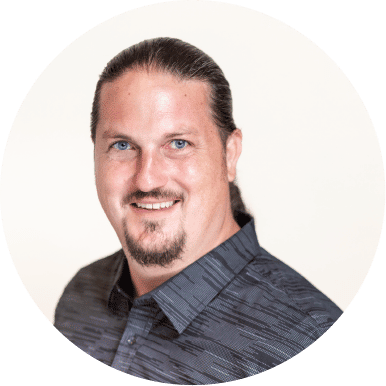Hiring starts with culture. Culture, more than anything else, is what attracts people to a company – and what keeps them there. It’s also what makes them leave. Your culture is a magnet: you attract the people you deserve.
After the release of his new book How to Hire, CareerPlug’s Founder and CEO Clint Smith sat down with Ben Siegel, Owner of Banger’s Sausage House & Beer Garden, for a conversation about attracting the right people to your team through excellent company culture.
In this webinar, you’ll learn about the importance of company culture and core values, how to bring those values to life in the hiring process, and how you can create a company vision that brings your team together.
Full Webinar Video:
How to create core values
Creating core values is one of the most important things you can do to strengthen your company culture and attract high quality candidates.
Smith outlines his core value building process in the first chapter of How to Hire.
He shares, “We got together as a leadership team and asked ourselves ‘who at our company exemplifies our culture? Who do we want to be as an organization? What is it about that person that we love so much?’
The CareerPlug leadership team was able to create a prospect list of core values based on the qualities of their best employees. After consolidating and eliminating some of those values to narrow down the list, Smith continues, “We ended up with four values, and we spent a lot of time defining those – I think we even attached a quote to each value. From there we incorporate it into daily work.”
Siegel noted that it’s important to be open with your team about this process, especially at the beginning. Be clear on whether or not employees get to vote, or if authority is making the final calls. He explains, “I don’t think there’s any right or wrong answer to it – what’s crucial is that you explain up front how it’s going to work so no one feels disenfranchised.”
Finally, Smith gave some tips for drafting values: “I would really encourage you to not draft up the values by yourself and give them to your team saying, ‘hey what do you think?’ because they are all going to agree with you. You have the loudest voice in the room, and it’s wise to stay quiet in the beginning and listen to what employees have to say. Naturally, everyone has blind spots to what you’re not seeing – how do they see your culture and organization? Let it develop organically!”
Creating your company vision
Both Smith and Siegel have successfully developed their company’s vision and culture, yet their journey was not without setbacks that ultimately contributed to their growth and learning along the way.
Smith recalls building CareerPlug’s mission, vision, and values in the early days: “I understood where we wanted to go but it wasn’t documented – so it was all me! Eventually we had other people on the team doing the hiring, but they didn’t know what to look for, and they didn’t know how to promote the company. We should have had everything documented, and I should have empowered my team to help me get there sooner.”
It’s never too early to get started with creating your company culture and core values!
Siegel shares a lesson he learned about following through with your values. He says, “It’s not a ‘set it and forget it’ thing. You can define all the things that Clint’s talking about, but if you’re not continuing to discuss it, it can fall to the wayside.”
If you want to build a strong company culture, you need to make sure everyone on your team is on the same page.
Using core values in the hiring process
Smith and Siegel agreed that core values should be the filter through which people come into your organization, and also by which they leave the organization.
Siegel explains, “I think a lot of it has to do with crafting interview questions that speak to the values. That is rooted in the understanding of your team – the better your team gets it, the better they can go out and get other people that are it. If you do a good enough job of having value-aligned people in the organization, and are ensuring that your most value-aligned people are the ones that are conducting the interview, it really is as simple as saying ‘go hire somebody like yourself.’”
For the interview process, Smith says, “In my experience the candidates, the ones that are most aligned with their values, you don’t have to ask him a question about it. You don’t have to say, ‘tell me about how you live out X, Y, and Z values’ — it just comes out in the interview when they talk. You don’t even need to screen for it.”
The cost of misaligned values
At the end of the day, nobody is a perfect hiring manager. Bad hires happen, especially if you don’t know how to hire for company culture! Siegel and Smith share their experiences when hiring someone with misaligned values, and what it cost their organizations.
Siege says, “I can tell you, not proudly, I’ve wrecked my entire organization through well-intentioned leadership hires that ended up not being value-aligned. I failed as the owner by allowing them to stay and continue on.”
All hires should strive to be value-aligned, but if your leadership roles are misaligned, it can cause a ripple effect of disorder affecting everyone under their supervision.
Smith shares a poor hiring experience that led to company confusion: “I had a leader that I hired – he was great at his job but not a culture fit. What ended up happening was he created his own silo of a culture within his team that more matched his values. We ended up having the company values and then his team’s values. The whole idea of working together between teams, which is really important for us in particular, was just a mess.” Smith wishes he took more time to evaluate the candidate on the front end of the hiring process, where it can make all the difference.
Core values in day-to-day work
Your core values shape the way your organization operates, guiding your team’s actions and providing a sense of purpose. With this in mind, it’s important to know how to incorporate your values into day-to-day life.
Siegel shares how Bangers operates: “In our restaurant, every week or two we’ll highlight and talk about our values. We’ll reinforce our values every month with ‘employee of the month’ or ‘employee of the year.’ A lot of business owners will write values out of guilt and obligation. But unless you find your own way to weave that into your day to day practices, then you really just have words on a page.”
Drawing from How to Hire, Smith shares, “Culture is not a sign hanging on the wall. It’s much more important to live the values and for employees to feel that this is who they are. Let’s say you’re all about making money – be real with that! Put that out there and you’re going to attract people like you that can help you do that. You’ve got to be real with yourself because you’re going to attract the people who match up with your values.”
Smith explains how CareerPlug uses their core values throughout the entire hiring process: “We use our 4 values from the entire life cycle – when we promote a job we advertise our values, they’re on the hiring scorecard, we talk about them during orientation, we talk about them in reviews, we tie specific values to gratitude and employee recognition shoutouts, and then we also use it for discipline with something called the people analyzer which is tied to EOS operating system.”
The importance of trust
Both Smith and Siegel agreed that having an intrinsically inspired team is key in building a successful company culture.
Smith draws from one of his personal favorite sources, Daniel Pink, who explains the important of trust in hiring and retaining employees:
There are three key drivers of intrinsic motivation in the workplace:
- Autonomy: “I trust you and know that you will do the right thing”
- Mastery: “I care about you and want to see you grow”
- Purpose: “I need you and want us to accomplish our mission together”
Siegel puts it simply: “We want our people to feel: ‘you’re smart and we trust you.’”
Smith and Siegel talked about how A-players thrive in an environment that says ‘don’t tell me exactly what to do – just tell me where we need to go, some of the guidelines, and let me run with it.’ That mindset builds employee empowerment. You want your team to feel like they have careers, not just jobs.
Smith explains, “If you just have a bunch of rules in your organization, all you’re going to create is a team of rule followers. You’re going to encourage that type of culture. But if you want a culture of innovators, and a culture of people that want a challenge, that’s not the culture you’re going to have by creating a bunch of company policies.”
Developing a employer brand
Some organizations are still in the process of ironing out their employer brand. Still, there are ways that you can begin to build your brand and strengthen your image.
Smith shares, “If you’re not in the position to define an employer brand – my biggest thing is authenticity. You don’t need to go hire a video crew to do some big montage of your company. Some of the most effective things I’ve seen are ‘a message from the hiring manager’ or ‘a message from the owner.’
Smith also discusses giving your employees a voice. He explains, “CareerPlug has a lot of employee testimonials, photos, videos – that’s the stuff that really makes a difference. This works if you’re part of a bigger organization like a franchise where you already have a set culture and brand, but you need to establish your own personal context of who you are and where you’re trying to go.”
Culture leads to quality of applicants
Siegel discusses a strong correlation: when you focus on your company culture, you start to attract high quality candidates.
He explains, “It’s almost like a chicken and the egg situation – I think that there is a practical way that it happens. A-players attract A-players. Psychologically, it used to be ‘we’re not good enough to hire this person’ and that was true. When you start to attract higher talent as you bring company culture in, the mindset shifts to, ‘absolutely we’re ready for this, and we’ve leveled up to a place where we can hire this kind of talent.’ So there is a kind of self-fulfilling prophecy to it.”
To sum it up
Siegel shares some final thoughts about How to Hire: “It’s a great synthesis of wonderful knowledge and some new ideas that are out there…but I think what sets it apart from other books I’ve read is that what feels like a genuine desire to help people, and then you get real resources past the book to help you do that.”
Clint Smith’s new book, How to Hire is a valuable resource that breaks down the importance of having a company culture and core values. Whether you’re in the beginning process of defining your core values, shaping your company vision, or you simply want to make your company culture stronger, this book can help you succeed. To dive deeper into these concepts and gain practical guidance, be sure to check out How to Hire to help you build a strong, value-driven organization.

Hire and Retain More Quality Applicants with CareerPlug
CareerPlug’s hiring software is an essential tool for a great recruitment process. Click the button below to get a personalized demo today!
Get Started



























